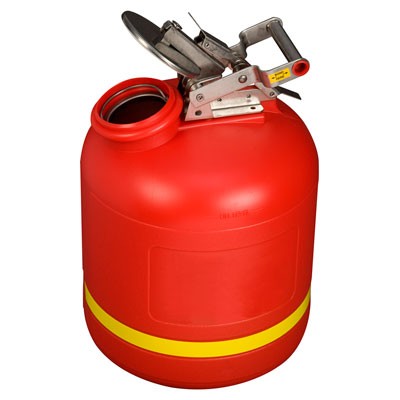Comprehensive Liquid Waste Disposal: Solutions for Houses and Organizations
Comprehensive Liquid Waste Disposal: Solutions for Houses and Organizations
Blog Article
Just How Fluid Waste Disposal Functions: An In-depth Overview of Techniques and Technologies Employed

Overview of Liquid Waste Types
The complexity of liquid waste types demands a comprehensive understanding of their qualities and ramifications for disposal. Liquid waste can broadly be categorized right into numerous kinds, including industrial, municipal, farming, and contaminated materials. Each group shows unique residential properties, needing particular management strategies to mitigate ecological and health and wellness risks.
Industrial fluid waste stems from producing processes and often has a variety of pollutants, such as hefty steels, solvents, and organic substances. Local liquid waste, largely making up wastewater from homes and commercial facilities, includes raw material, nutrients, and pathogens (industrial wastewater treatment). Agricultural fluid waste, including drainage from farms, might consist of fertilizers, chemicals, and animal waste, presenting risks to water top quality and environments
Dangerous fluid waste is identified by its poisoning, reactivity, or possible to trigger harm. Recognizing these varied fluid waste types is important for creating effective disposal methods and making sure conformity with ecological regulations.
Physical Treatment Techniques

Testing is the first step, where larger fragments and debris are removed from the fluid waste utilizing screens or grates. In sedimentation containers, much heavier particles resolve at the base, forming a sludge layer, while the clarified liquid can be further dealt with.
Purification is an additional essential technique that entails passing the liquid with permeable products, such as sand or membranes, to catch smaller fragments. This step boosts the high quality of the fluid, making it appropriate for succeeding treatment procedures.

Chemical Therapy Methods
Chemical therapy methods are essential for successfully managing fluid waste, particularly in attending to liquified and colloidal pollutants that physical approaches may not effectively remove. These methods make use of various chemical representatives to neutralize, precipitate, or change unsafe compounds right into much less hazardous types.
One usual method is coagulation and flocculation, where chemicals such as alum or ferric chloride are contributed to advertise the gathering of suspended bits. This procedure boosts sedimentation, enabling much easier elimination of the resulting sludge. Additionally, oxidation processes, utilizing representatives like chlorine or ozone, are utilized to damage down complex organic compounds and microorganisms, providing the waste more secure for discharge or further treatment.
Neutralization is one more important strategy, which adjusts the pH of acidic or alkaline waste streams to neutral levels, avoiding prospective damage to downstream systems and the setting. In addition, progressed oxidation procedures (AOPs) utilize combinations of oxidants and ultraviolet light to degrade persistent contaminants, accomplishing a higher level of treatment efficiency.
Biological Treatment Processes
Biological therapy procedures play a crucial function in the monitoring of fluid waste by using bacteria to disintegrate raw material and minimize pollutant levels. These processes can be generally classified right into anaerobic and cardiovascular treatments, each employing specific microbial communities to attain reliable waste deterioration.
Cardiovascular treatment involves the usage of oxygen to assist in the malfunction of organic materials by microorganisms. This procedure is frequently executed in triggered sludge systems, where aeration tanks give a conducive environment for microbial development, causing the oxidation of organic toxins. The resultant biomass can be divided from treated effluent via sedimentation.
In comparison, anaerobic treatment takes place in the lack of oxygen, relying on various germs to break down natural matter. This approach is especially beneficial for high-strength waste, as it creates biogas, a sustainable energy resource, while decreasing sludge manufacturing. Technologies such as anaerobic digesters are often used in local and industrial applications.
Both cardiovascular and anaerobic organic treatments not just reduce the ecological effect of fluid waste however additionally help with source recovery, making them crucial elements of lasting waste management approaches. Their versatility, performance, and effectiveness support their click resources extensive execution across various markets.
Arising Technologies in Disposal
Cutting-edge techniques to fluid garbage disposal are rapidly progressing, driven by innovations in technology and an enhancing focus on sustainability. Amongst these arising modern technologies, membrane bioreactors (MBRs) have acquired traction for their capability to integrate organic therapy with membrane layer purification, resulting in premium effluent that can be recycled in numerous applications. MBRs enable smaller footprints and more efficient operations compared to traditional systems.
Another promising development is the use of anaerobic digestion combined with nutrient recovery technologies, which not only deals with fluid waste yet likewise produces biogas and recuperates useful nutrients like nitrogen and phosphorus. This double benefit enhances resource performance and lowers ecological effect.
Furthermore, advanced oxidation processes (AOPs) are being adopted for the degradation of intricate natural contaminants. These methods utilize effective oxidants and stimulants to break down contaminants at the molecular degree, using an extremely effective solution for tough waste streams.
Additionally, the their explanation combination of expert system and artificial intelligence in waste management systems is maximizing functional efficiency and anticipating maintenance, leading to lowered expenses and improved ecological compliance. These modern technologies show a significant change towards even more efficient and lasting liquid garbage disposal methods.
Conclusion
In conclusion, efficient fluid waste disposal demands an extensive understanding of different strategies and modern technologies. By continuously advancing these methods, it comes to be feasible to address the growing difficulties connected with fluid waste, inevitably adding to ecological defense and source recovery.
Liquid waste disposal is an important facet of ecological monitoring, requiring a comprehensive understanding of various techniques and innovations tailored to different waste types. Liquid waste can helpful site broadly be categorized into several types, consisting of commercial, metropolitan, farming, and dangerous waste. Agricultural liquid waste, consisting of drainage from ranches, might consist of fertilizers, pesticides, and animal waste, posing risks to water top quality and ecosystems.
Various physical therapy approaches play an essential duty in handling liquid waste efficiently - industrial wastewater treatment.In conclusion, reliable fluid waste disposal requires an extensive understanding of various techniques and modern technologies
Report this page